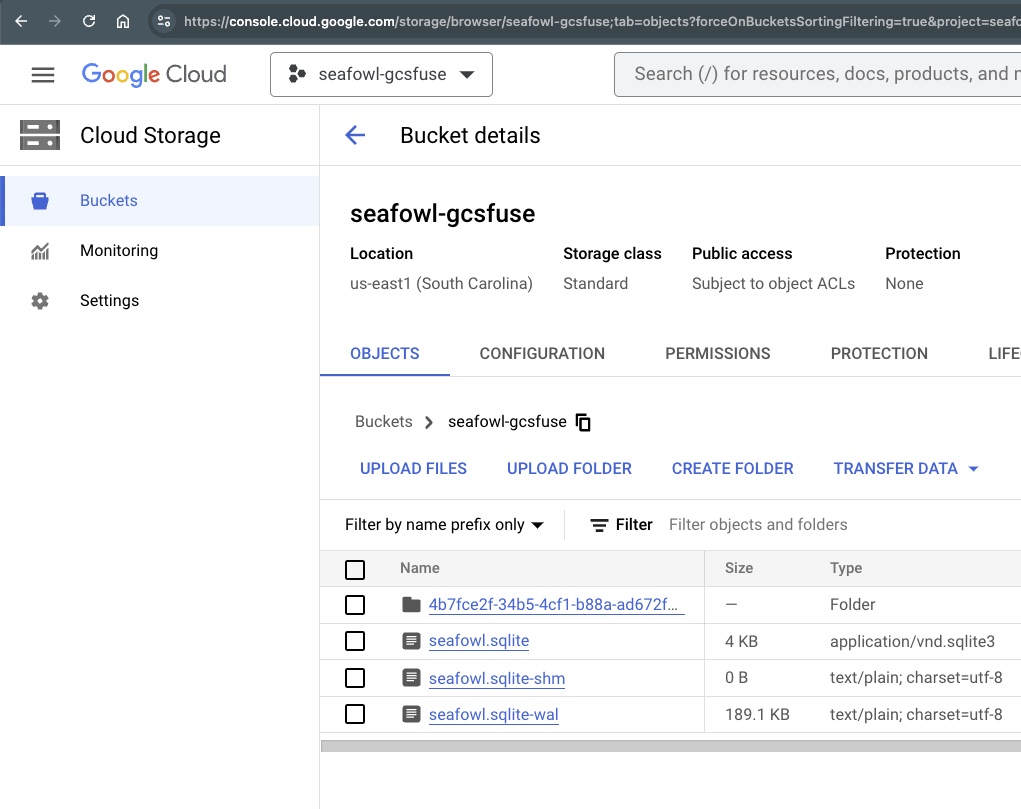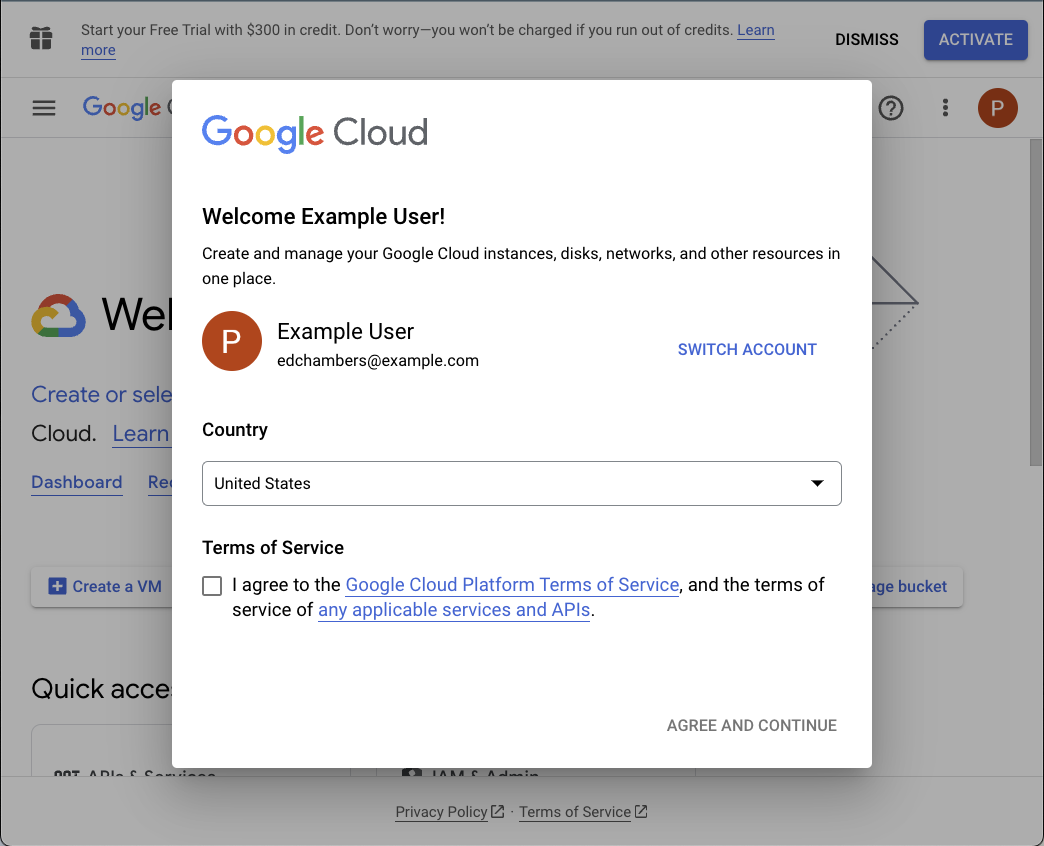Splitgraph has been acquired by EDB! Read the blog post.
Deploying a serverless Seafowl DB to Google Cloud Run using GCS FUSE and SQLite
Learn how to combine Seafowl with GCS FUSE to achieve true scale to zero. Serve users at the edge with a web (HTTP)-first analytical database that works on GCP Cloud Run, including within the "always free" tier.
Introduction
Seafowl is a new analytics database based on DataFusion and delta-rs, designed for running "at the edge" and serving queries over HTTP with cache-optimized responses. Because it separates storage from compute, it's an ideal candidate for running in "serverless" environments. In this post, we'll explore the architecture behind Seafowl and demonstrate how to deploy it to Google Cloud Run (GCR) as a true "scale-to-zero" serverless database that doesn't require any persistent compute resources, and can query data stored in Google Cloud Storage (GCS), while minimizing cold-start times.
Why do we need a serverless database?
The advantage of serverless applications is that each instance of an application can execute in a region close to the user requesting it, without the need to provision a server in every region ahead of time. But there's a catch: for most use cases, the application is bottlenecked by the database, which does require provisioning a persistent server ahead of time. This can mean sacrificing the main benefit of serverless, as every cache miss needs to query a single master database in an arbitrary region, regardless of how close to the user the HTTP server is executing.
Seafowl solves this problem for analytical workloads, by accepting certain tradeoffs that might be less acceptable for transactional databases, in exchange for fast and cacheable responses to read queries. For example, as an OLAP database, Seafowl assumes that data is loaded into it periodically, and it's generally okay to return stale data while loading new data into it.
Why Seafowl?
Seafowl separates compute and storage of the data it queries. It makes data in object storage queryable by a Docker image (binary also available), and maintains its internal catalog by writing to a SQLite file. This makes it easy to deploy as a serverless function to any platform that can run Docker images, like Google Cloud Run2. With Seafowl you can expect a fast initialization time (e.g. 10ms) and configurable dependencies keep you in the driver's seat for deciding which tradeoffs make sense for your situation.
Another perk: because Seafowl offers a CDN-friendly HTTP story, if your data is suitable for caching your end users will likely further benefit if you choose to front with e.g. CloudFlare or similar CDN providers.
What's the challenge?
The challenge is avoiding cold starts, while also avoiding the need for a persistent node for storing metadata. The Seafowl architecture is divided into three parts: compute (e.g. the binary, deployed in e.g. a Docker image); storage (the blob data in Object Storage); and a catalog (the metadata and information schema for the database). Compute and storage map naturally to services like GCR and GCS. But for the catalog, it's less clear. Seafowl supports writing catalog metadata to either a Postgres database, or a SQLite file. A Postgres catalog supports multiple writers, making each Seafowl instance able to act as a reader and a writer. This comes at the cost of requiring a persistent node (options like Neon1 exist, but in our testing, the latency was unacceptable as it caused cold starts of multiple seconds). A SQLite catalog can be bundled with the image, but at the cost of being able to actually persist Seafowl writes.
Is there a way we can get the best of both worlds? With GCS FUSE, we can come close. That's what we'll explore in this post. We're going to deploy Seafowl to GCR, and mount its catalog as a SQLite "file" on the FUSE filesystem backed by GCS. The end result is a serverless database that can respond to read queries from any region, with start times on the order of 10ms.
Goal
In today's post we show you how to stand up serverless Seafowl on Cloud Run.
GCP offers an "always free" tier which may cover both your storage and compute needs. This HOWTO seeks to stay within those limits, so you are likely to have low or possibly zero costs. Either way, this guide sequesters all resources we create here into a separate GCP project for easy cleanup.
Requirements
- Access to GCP (e.g. a Google account3)
- The
gcloudCLI (aka Cloud SDK. Need it?) - Choosing a unique-to-GCP
- project name (
$PROJECT_NAME) - bucket name (
$BUCKET_NAME)
- project name (
Ready? Let's begin!
- After installing
gcloud, login to your Google account.
gcloud auth login
- Create a new project (optional, suggested).
gcloud projects create $PROJECT_NAME
Create in progress for [https://cloudresourcemanager.googleapis.com/v1/projects/seafowl-gcsfuse].
Waiting for [operations/cp.6073745129322302465] to finish...done.
Enabling service [cloudapis.googleapis.com] on project [seafowl-gcsfuse]...
Operation "operations/acat.p2-124549755242-c3e8de2b-a6fa-4a73-aaa1-ad949f26e7cb" finished successfully.
ℹ️ In case you get an "already in use" error, please choose a unique name. Consider appending some randomness and use export PROJECT_NAME=YourName to refer to it through the rest of the commands).
- Set your project and region
Creating resources in the same region gives best performance as well as helps avoid cross-regional networking charges.
gcloud config set project $PROJECT_NAME
Updated property [core/project].
gcloud config set run/region $REGION # e.g. us-east1
Updated property [run/region].
- Create a bucket
This bucket will be mounted as a pseudo-filesystem inside Seafowl's container.
gsutil mb -l us-east1 gs://$BUCKET_NAME
Creating gs://$BUCKET_NAME/...
ℹ️ Cloud Storage bucket names share a global namespace. Similarly to the project name, in case you encounter e.g. "The requested bucket name is not available", please pick a unique name and export BUCKET_NAME=MyBucket.
- Setup up Seafowl's config + credentials
- Seafowl can be configured via
seafowl.toml. We persist it in GCP's Secret Manager so it can be mounted in our function.
[object_store]
type = "gcs"
bucket = "$BUCKET_NAME"
google_application_credentials = "seafowl-data/seafowl-gcsfuse.json"
[catalog]
type = "sqlite"
dsn = "seafowl-data/seafowl.sqlite"
[frontend.http]
bind_host = "0.0.0.0"
write_access = "efe507120a88bdb1b7a2e0479bdc4c163bc31c2d83787240dbccd8b95115d92a"
Replace with your real bucket name, then save the above config as seafowl.toml, and then run:
gcloud secrets create --data-file seafowl.toml seafowl_toml
(Allow the API to be enabled, if it asks)
- Upload the credential file into the bucket via:
gcloud storage cp seafowl-gcsfuse.json gs://$BUCKET_NAME/seafowl-gcsfuse.json
Copying file://seafowl-gcsfuse.json to gs://$BUCKET_NAME/seafowl-gcsfuse.json
Completed files 1/1 | 2.3kiB/2.3kiB
NOTE: The Secret Manager is also suitable for this file.
In the interest of keeping a lid on costs we only save one secret. By mounting seafowl-gcsfuse.json via GCS Fuse, it's provided to Seafowl before it starts.
- Establish least privilege permissions We create a service account so that minimum needed permissions are sequestered into their own identity.
gcloud iam service-accounts create seafowl-gcsfuse-identity
Add a binding for object storage and accessing secrets.
gcloud projects add-iam-policy-binding $PROJECT_NAME \
--member "serviceAccount:seafowl-gcsfuse-identity@$PROJECT_NAME.iam.gserviceaccount.com" \
--role "roles/storage.objectAdmin" \
--role="roles/secretmanager.secretAccessor"
Updated IAM policy for project [$PROJECT_NAME].
bindings:
- members:
- user:user@example.com
role: roles/owner
- members:
- serviceAccount:seafowl-gcsfuse-identity@$PROJECT_NAME.iam.gserviceaccount.com
role: roles/storage.objectAdmin
etag: BwX8Ze-ob4Y=
version: 1
- Almost done! Now we can deploy the function:
gcloud run deploy seafowl-gcsfuse \
--image splitgraph/seafowl-gcsfuse:latest \
--execution-environment gen2 \
--allow-unauthenticated \
--service-account seafowl-gcsfuse-identity \
--update-secrets=/app/config/seafowl.toml=seafowl_toml:latest \
--update-env-vars BUCKET=$BUCKET_NAME
API [run.googleapis.com] not enabled on project [814934642383]. Would you like to enable and retry (this will take a few minutes)? (y/N)? y
Enabling service [run.googleapis.com] on project [814934642383]...
Dockerfile available.
- Check it with
curl
Just swap your endpoint for the sample one.
Read
curl -i -H "Content-Type: application/json" \
-X POST "https://seafowl-gcsfuse-YourEndpointHere.a.run.app/q" -d@- <<EOF
{"query": "
SELECT now()
"}
EOF
Should return something like:
HTTP/2 200
content-type: application/octet-stream
vary: Content-Type, Origin, X-Seafowl-Query
x-cloud-trace-context: 2f378466d69425e60793db49b4f406a4
date: Fri, 19 May 2023 14:57:37 GMT
server: Google Frontend
content-length: 43
{"now()":"2023-05-24T14:57:37.809652290Z"}
Write
curl -i -H "Content-Type: application/json" \
-H "Authorization: Bearer Fc8yA8SZ0On70pg7znAu7s6EEHnDgUzP" \
-X POST "https://seafowl-gcsfuse-YourEndpointHere.a.run.app/q" -d@- <<EOF
{"query": "
CREATE TABLE holditright (id int)
"}
EOF
Should return
HTTP/2 200
content-type: application/octet-stream
vary: Content-Type, Origin, X-Seafowl-Query
x-cloud-trace-context: 8f75d4895dac499dbeef7eabd6fdfcba;o=1
date: Fri, 19 May 2023 16:36:09 GMT
server: Google Frontend
content-length: 0
Verify
If you look at your bucket using the web console, you should see something roughly similar to this:

Tear down
The function you just deployed is likely to be within the always free tier, but in case you'd like to clean up the project, run:
gcloud run services delete $SERVICE_NAME # e.g. seafowl-gcsfuse
gcloud config set project $PROJECT_NAME
gcloud config set run/region $REGION
Here's how to delete the bucket and the service account.
Conclusion
Congrats! 🎉 You have a scale to zero, web (HTTP)-first analytical database, deployed to the edge. Ready to load up with whatever data you want, and ready to be fronted by a CDN.

Optional Follow Up
Two bonus ideas for consideration:
- For public & production deployments, a common next step is controlling who can write vs read. Consider deploying two functions: read-only for public access and write-enabled which is only available to trusted parties. Setting read-only can be done by providing env var
SEAFOWL__FRONTEND__HTTP__WRITE_ACCESS=offandRUN_SEAFOWL_READ_ONLY=trueinfo. - If your data is public, and your users would benefit from better latency, consider fronting the Cloud Run endpoint with CloudFlare. The CloudFlare CDN offers a convenient and powerful way to cache query results.
Image credits
Not your preferred cloud provider? Let us know if you'd like to see a Lambda or Container Instance version of this post.↩
This is roughly what you should see if you visit the GCS console for the first time.
